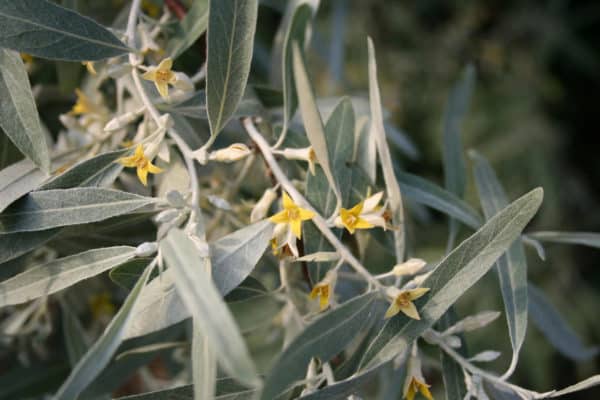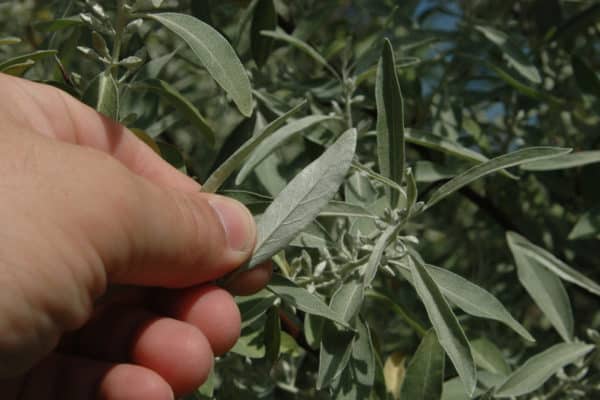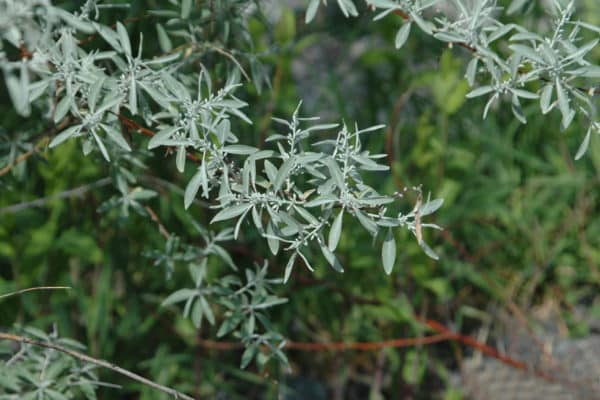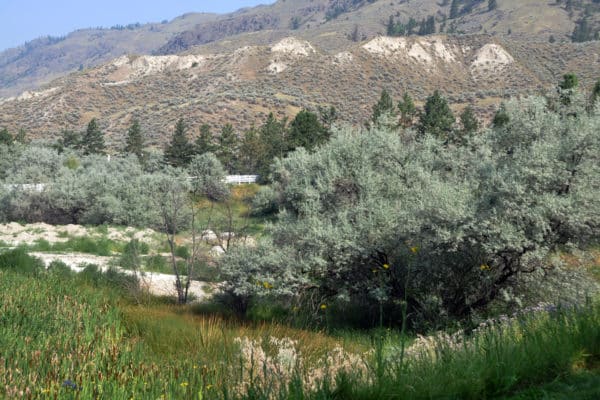Russian olive
About This Species
Russian olive (Silver berry, Oleaster) is a short invasive tree that can survive in dry conditions,cold temperatures and poor soils. It was introduced from its native range in Russia and Aisa. It drinks more water than most plants in dry soil settings, therefore it can outgrow and compete with native species. Seeds are spread from bird droppings and wildlife eating the berries, as well as through flowing water and by beaver activity.
How to Identify
Russian olive is a small ornamental tree with black bark that can grow 3–8 m tall.
Flowers are small, yellow and fragrant flowers, and its edible silver fruit resembles olives.
Leaves are long, narrow and silver.
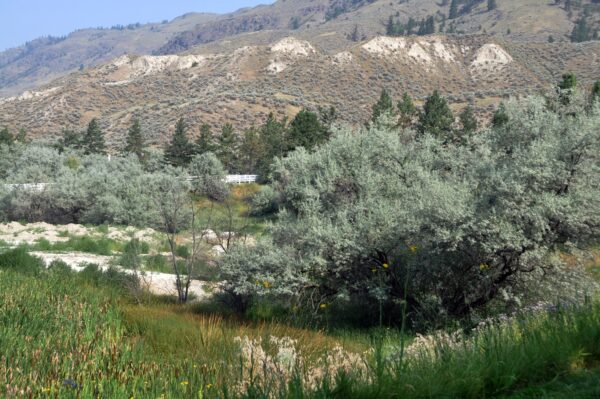
Take Action
Prevention is the best approach.
-
If you need advice about invasive species on your property or you are concerned about reported invasives in your local area, contact your local government or regional invasive species organization.

Clean, Drain, Dry
Learn about best practices
The Clean Drain Dry program empowers you to help reduce the spread of invasive plants and organisms to BC waters by following the clean, drain, dry procedure on all watercraft and equipment.

Plantwise
Learn about best practices
A few non-invasive alternatives to plant instead of Russian olive include:
- Blue elderberry (Sambucus cerulea)
- Pacific ninebark (Physocarpus capitatus)
- Sandbar willow (Salix exigua)
- Scouler’s willow (Salix scouleriana)
- Wolf willow (Elaeagnus commutata)
REPORT TO PROTECT BC’S BIODIVERSITY

Use the app
Observe and report to protect BC’s biodiversity

Report through this website
Use our form to tell us what you’re seeing and where.



